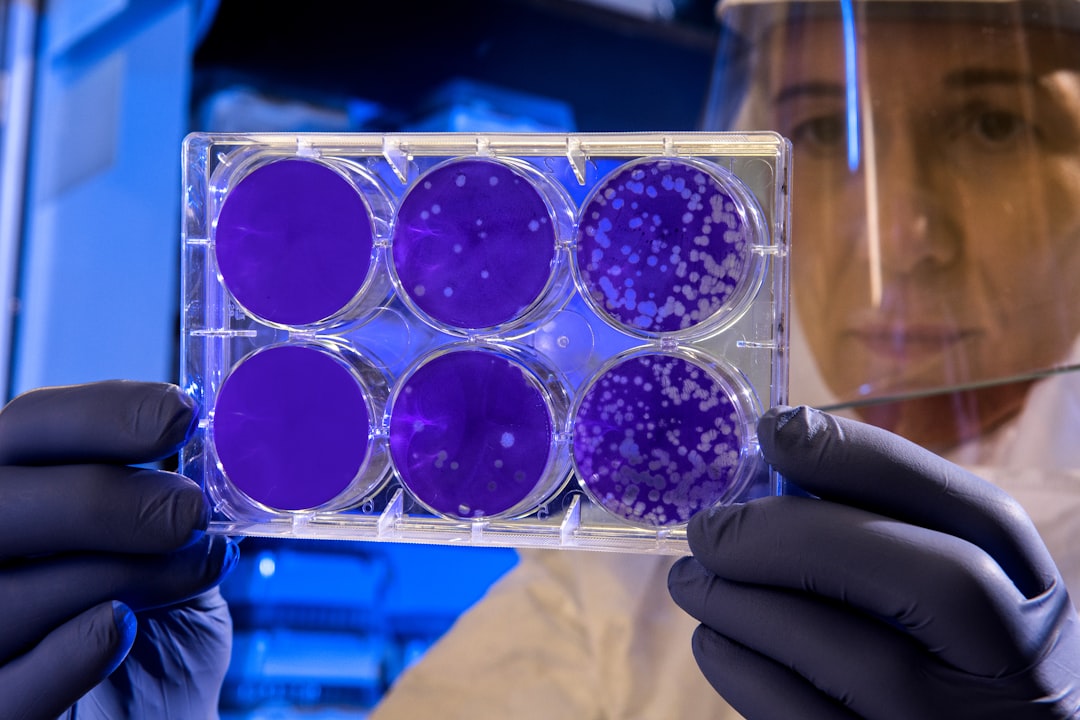What is it about?
This article discusses a new method for producing oxygen using waste heat from a ceramic factory. The method uses a mixed ionic-electronic conducting (MIEC) membrane, which can extract oxygen from air at high temperatures and pressure gradients. The system is powered by turbochargers, which recover energy from the flue gases. The authors found that the system can produce oxygen at a cost of €30.8/t, which is competitive with the wholesale market price of €50/t. The system can also produce oxygen with a purity of 95%, which is higher than the purity of oxygen produced by the most reliable method nowadays.
Featured Image

Photo by Ant Rozetsky on Unsplash
Why is it important?
From a technological point of view, the most important aspects of the new oxygen production method are: - Efficiency: The system uses waste heat from a ceramic factory to power the MIEC membrane, which is a highly efficient way to produce oxygen. This reduces the overall energy consumption and cost of the process. - Purity: The system can produce oxygen with a purity of 95%, which is higher than the purity of oxygen produced by the most reliable method nowadays. This is important for many industrial applications, such as oxy-fuel combustion and metal refining. - Cost-effectiveness: The authors found that the system can produce oxygen at a cost of €30.8/t, which is competitive with the wholesale market price of €50/t. This makes the system a viable alternative for many industrial applications. - Sustainability: The system is powered by waste heat from a ceramic factory, which is a renewable energy source. This makes the system more environmentally friendly than traditional methods of producing oxygen, which rely on fossil fuels. In addition to these technological aspects, the system also has the potential to reduce the environmental impact of ceramic manufacturing by eliminating the need to transport high-purity oxygen to the factory. This could lead to a significant reduction in CO2 emissions. Overall, the new oxygen production method is a promising technology with the potential to make a significant impact on the industry. It is efficient, produces high-purity oxygen, and is cost-effective. Additionally, the system is powered by renewable energy and could help to reduce the environmental impact of ceramic manufacturing. From a social perspective, the most important aspects of the new oxygen production method are: - Economic benefits: The system has the potential to save money for ceramic manufacturers by reducing their reliance on imported high-purity oxygen. This could lead to lower prices for ceramic products and increased profits for ceramic manufacturers. - Environmental benefits: The system is powered by renewable energy sources, which helps to reduce greenhouse gas emissions and improve air quality. This could have a positive impact on the health of workers and residents in the surrounding community. - Employment opportunities: The development and deployment of the new oxygen production method could create new jobs in the manufacturing, installation, and maintenance of the system. - Improved energy security: The system could help to reduce the reliance on foreign sources of high-purity oxygen, which could make ceramic manufacturing more secure in the event of a supply disruption. - Technological advancement: The development of the new oxygen production method represents a significant technological advancement in the field of oxygen production. This could lead to further innovation and improvements in the efficiency and cost-effectiveness of oxygen production. Overall, the new oxygen production method has the potential to make a positive impact on society in a number of ways. It could save money for businesses, reduce greenhouse gas emissions, create jobs, improve energy security, and advance technological innovation. As a result, it is a technology that deserves to be further developed and deployed.
Perspectives
As one of the authors of this article, I am very excited about the prospects of our new oxygen production method. I believe that it has the potential to revolutionize the oxygen production industry and make a significant contribution to society. Firstly, the method is very efficient. It uses waste heat from a ceramic factory to power the MIEC membrane, which reduces energy consumption and the overall cost of the process. Secondly, the method produces oxygen with a purity of 95%, which is higher than the purity of oxygen produced by the most reliable method in use today. This is important for many industrial applications, such as oxy-fuel combustion and metal refining. Thirdly, the method is cost-effective. Our research results show that the cost of oxygen production is €30.8/t, which is competitive with the wholesale market price of €50/t. This makes the system a viable alternative for many industrial applications. Fourthly, the method is sustainable. It is powered by waste heat from a ceramic factory, which is a renewable energy source. This makes the system more environmentally friendly than traditional methods of oxygen production, which rely on fossil fuels. Fifthly, the method has the potential to reduce the environmental impact of ceramic manufacturing. By eliminating the need to transport high-purity oxygen to the factory, the system could lead to a significant reduction in CO2 emissions. I believe that these prospects are very promising. The new oxygen production method has the potential to save businesses money, reduce greenhouse gas emissions, create jobs, improve energy security, and advance technological innovation. As a result, it is a technology that deserves to be developed and deployed. I am confident that the new oxygen production method will have a positive impact on society. I am excited to see how it develops and is implemented in the future.
Dr. Francisco José Arnau Martínez
Universitat Politecnica de Valencia
Read the Original
This page is a summary of: Thermo-economic analysis of an oxygen production plant powered by an innovative energy recovery system, Energy, September 2022, Elsevier,
DOI: 10.1016/j.energy.2022.124419.
You can read the full text:
Contributors
The following have contributed to this page










